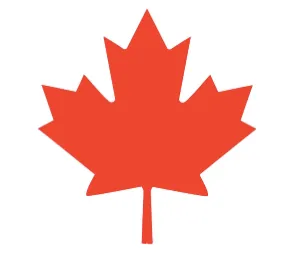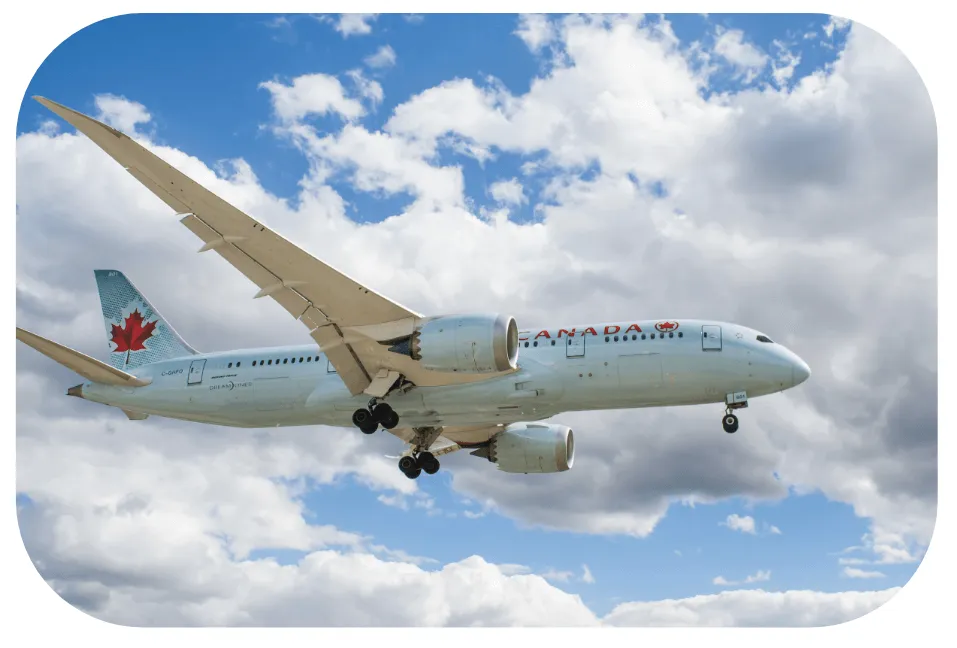Useful Tips for Doctors Practicing in Canada
Life as a Doctor in Canada

These are some frequently asked questions and the answers we give doctors coming from the United Kingdom, Ireland, Australia, and the USA who want to practice as General Practitioners in Canada. We understand that each doctor immigrating to Canada will have his or her individual circumstances that may influence the information below.
Social Insurance Number
To work in Canada, or access government programs and benefits, you need a 9-digit number known as a Social Insurance Number (SIN).
Your SIN is private, and it is illegal for anyone else to use it. You are responsible for protecting your SIN.
Service Canada is responsible for issuing SINs, which comes in a paper format (Confirmation of SIN letter). If you have a plastic SIN card that has not expired, it is still valid.
It is usually quickest and easiest to visit a local Service Canada office. We recommend that you visit the local Service Canada office on your first business day in Canada. Bring your passport, work permit and other documents and most applicants receive their social insurance number on the spot. It is also possible to apply online or by post but may take several weeks.
Discover the documents necessary for your SIN.
You will need a SIN for most of the purposes listed below.



Renting a Car
When you arrive in Canada you might want to rent a car. There are discount car rental companies that offer slightly older cars for a large discount from the prices offered by Hertz, Budget, National and other major companies.
Buying a Car – Physician Discounts
When you decide to buy a vehicle, ask if the company offers a discount for doctors. Most new doctors in Canada qualify for credit to buy a car. It might help to bring a copy of your Experian credit report from your home country.

Driver’s Licence
In most provinces you can simply go to a drivers’ licence office and exchange your British Driver’s license for a Canadian licence. Before you arrive in Canada, just Google “driver’s licence and the name of the province where you will be practicing” for specific details. It is a good idea to bring a written copy of your driving record and insurance company record showing your claim history as you may qualify for a discount on vehicle insurance.

Medical Coverage
Canada has a single-payer medical system. You and your family will qualify upon application once you are in Canada. For most medical care this means there is no cost to you or your family to visit a doctor, for tests, and for hospital visits. Each province has a different application process. Some have instant coverage and others take two to three months to process your application. Google “Medical coverage (and the name of the province where you will be living). Do this in the first days you are in Canada.
The government of Canada is planning prescription drug coverage and dental coverage although details are not available yet.
Private Insurance
If you must wait for your provincial government insurance coverage to begin, then an option is to purchase private insurance. The cost starts as low as $100 per month. Google “Private health insurance and the name of the province where you are residing.”


Banking and Currency
Big Five is the name colloquially given to the five largest banks that dominate the banking industry in Canada: Bank of Montreal (BMO), Bank of Nova Scotia (Scotiabank), Canadian Imperial Bank of Commerce (CIBC), Royal Bank of Canada (RBC), and Toronto-Dominion Bank (TD). There are also 35 domestic banks, including 3 federally regulated Credit Unions. Most Canadians have accounts with the Big Five.
Physicians are usually eligible for professional advisors called Wealth Advisors. You will be a valued client as your income will put you among the highest paid people in Canada. As a valued client you will be eligible for preferred rates on mortgages, bank loans, and other special offers.
You will see a familiar face on Canada’s currency. Images of Queen Elizabeth and soon King Charles will appear on coins and paper currency.
Canada no longer uses pennies and the price of your purchases will be rounded up or rounded down. We use coins in place of one dollar and two-dollar paper currency. These are called loonies and toonies, respectively.
Credit cards are very popular and the most used cards are VISA, Mastercard, and American Express. As a physician, you should be offered a credit card when you open an account with a bank. Expect a credit limit of $2,000 – $15,000.
Debit cards or cash cards are also used, but businesses such as hotels and car rental companies will not accept them, if a deposit is required.
At most businesses you can just “tap” your credit card on a terminal and your purchase is approved. Some types of businesses have limits on how much you can spend by tapping without entering a PIN number.
A payment method commonly used in Canada is called e-transfer. This method allows you to go into your bank account and send money to someone else as long as you have their cell phone number or email address. There will be a daily limit, the amount is dependent on the bank and your banking relationship. E-transfer or a credit card are the two most common ways to pay for expenses. It will be rare that you can use a cheque to pay for a purchase. Monthly payments for rent and other regular payments will likely be made by a debit to your bank account.



School System
The Canadian education system is divided into four stages: Kindergarten, Primary (Elementary) Education, Secondary education, and Post-secondary education. Secondary education also refers to high school.
Kindergarten is the first stage of formal education in Canada, but it is not mandatory for all children.
Primary education generally starts at age five or (depending on a child’s birthday) and consists of grades one through eight. During these years, students typically learn the basics of math, science, language arts, and other disciplines.
Secondary education is the next stage and typically starts at age twelve. During these years, students study a combination of core subjects and specialized electives that give them more knowledge in different subject areas.
Canadian high schools are divided into two tracks: academic and applied.
Academic courses focus more on theoretical learning, while applied courses offer students hands-on experiences. After high school, Canadian students can go to college or technical school.
These post-secondary programs generally last two years and prepare students for a career in their chosen field.
Canadian students can attend university to pursue undergraduate and graduate degrees in various subjects, from business to engineering to social sciences.
There are also excellent private schools, religious or secular, throughout Canada offering extensive options.

Arriving at the Airport
As a doctor arriving at the airport in Canada there are a few things you should know:
- Before you fly make sure you have done a medical exam as instructed by our immigration expert and you have proof with you. Only a doctor or other medical professional needs to have a medical done. Your family does not need a medical done. If an immigration officer says something else, refer the officer to their own policy.
- You will obtain your work permit at the first port of entry (POE). So, if you will be practicing in Vancouver, your flight might stop in Calgary on the way from London. Calgary is where you will obtain your work permit.
- If you have a connecting flight between cities please make sure to allow plenty of time between your expected arrival time and the departure of your ongoing flight.
- At the immigration office you will receive a work permit specifically for the clinic where you have a contract. Your spouse will receive an open permit which allows your spouse to work in any occupation. Children will generally receive a study permit. If you have questions about this process please ask the immigration professional provided by Canada Medical Careers.
- Obtaining your work permit can take as little as 15 minutes or several hours. It all depends on the length of the queue. The queue length is determined by several factors including time of day, immigration officers available, flights arriving just before yours and more.
- Warning – Do not leave the airport via the Visitors Exit before going to the immigration office! It is extremely hard to get back into the immigration area once you have left.
- Second Warning – Upon receiving your work permit from the immigration officer, STOP and read it very carefully. Very occasionally the officers make a mistake by checking the wrong boxes and it will be very hard to change the work permit later. Don’t be rushed.
- Canadian airports are well serviced by transportation companies to take you to your destination upon arrival. Most airports have Uber, Lyft, and many taxis. Sometimes you will find limousines and executive cars waiting outside the airport and their rates are often just a few dollars more and their size can be useful if you have a great deal of luggage and many family members. All the above will usually offer a fixed rate to your destination, whereas taxis do not.


Making Friends
If you are coming to Canada alone, or even as a family, it may seem lonely unless you get out there and meet people. Canadians are well-known for their friendliness. One of the best resources is to Google “Newcomers club near me” and there are usually many listings, especially in the new cities. These are people like you who may have been a newcomer a year or two earlier and made new friends. Now they are ready to reciprocate by welcoming you.
You should also check out Meetup.com which is active in most cities. The groups on Meetup.com offer a wide variety of activities from horseback riding, Tai Chi for beginners, coffee parties, dances, biking, hiking, books, and much more.
Enjoy your new life in Canada!

Apply Now to Practice Medicine in Canada
We invite you to submit the simple, no-obligation, preliminary application below. Once we receive your application, we will be in touch within one business day, often immediately! For positions as a General Practitioner please apply only if you have the designations MRCGP, MICGP, FRACGP, FACRRM or DABFM (or an affiliate in the USA).